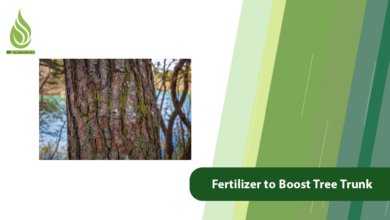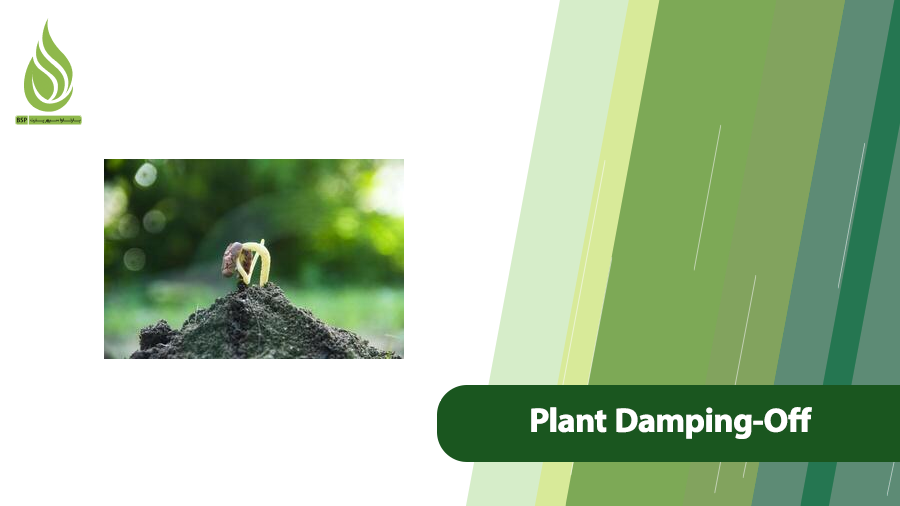
Symptoms & Signs of Plant Damping-Off + Prevention Methods
Plant damping-off (seedling blight) is a common and serious issue in agriculture and horticulture. Each year, this disease causes significant, often irreparable losses for growers. It leads to the decay of seeds, stems, and roots, ultimately killing the plant. In this article, we’ll explain the causes of damping-off in plants and explore effective methods to prevent and manage this disease.
Understanding Plant Damping-Off
Damping-off is a fungal disease that primarily affects cucurbit crops such as cucumbers, tomatoes, watermelons, squash, and melons. Several factors contribute to its development, including fungal pathogens, unfavorable temperatures, and overly moist soil conditions. These factors weaken the plant, causing it to lose its stems and leaves before eventually dying.
The disease targets young plants, as their delicate seedlings lack the structural strength to resist fungal invasion. Damping-off begins with the rotting of seeds, stems, or roots, leading to the plant’s rapid collapse.
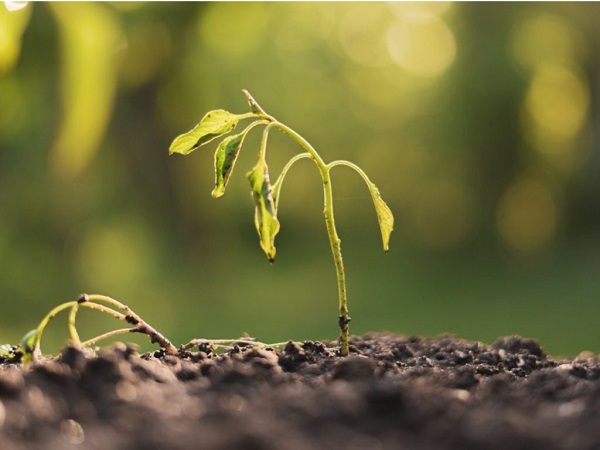
Across various regions. Damping-off inflicts significant economic losses on farmers, often forcing them to abandon second or third harvests of their crops. Understanding the symptoms and causes of this disease empowers farmers to make informed decisions and mitigate its damaging effects.
Symptoms of Damping-Off in Plants
Damping-off manifests in two distinct stages of plant growth, each with specific symptoms:
1. Pre-Germination Stage:
If seeds are planted in contaminated soil, they may rot before sprouting. In some cases, seeds germinate, but the seedlings rot before emerging from the soil, failing to develop into transplant-ready plants. A clear indicator of damping-off at this stage is the decay of seeds and their inability to green (sprout successfully). We suggest you take a look at our guide to faster germination.
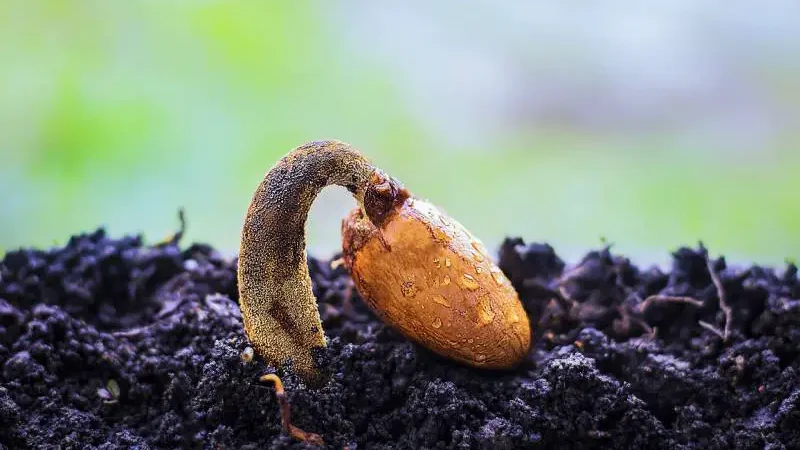
2. Post-Germination Stage:
Once seedlings emerge from the soil, the disease can escalate rapidly. At this stage, pathogenic fungi attack the collar region (where the stem meets the soil) and nearby tissues. The infected areas first become soft, waterlogged, and discolored. Over time, the lower stem near the soil thins out and turns dark brown to black.
This rot in the stem’s base disrupts the plant’s ability to transport nutrients from the roots to the upper parts, stunting growth. Leaves and above-ground sections wilt as a result. Eventually, the weakened stem can no longer support the seedling’s weight, causing the plant to collapse and rot entirely.
Alarmingly, plants may appear green and healthy initially, only to suddenly die if the disease goes unchecked. Without intervention, entire crops can be lost at this critical growth phase.
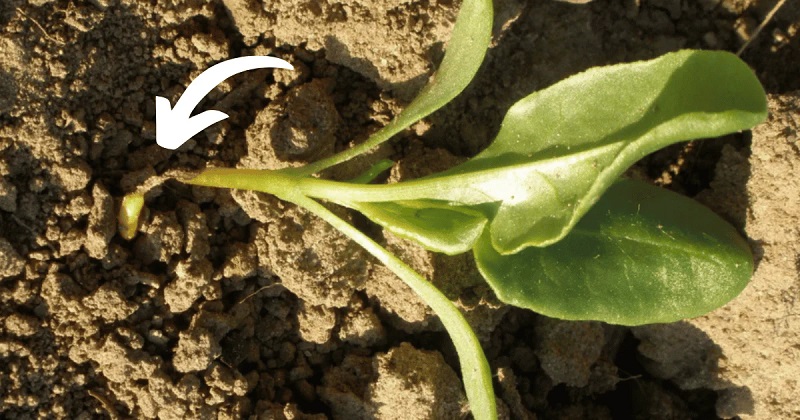
These symptoms clearly highlight the devastating effects of damping-off disease on plants, and understanding them empowers farmers to implement timely preventive and therapeutic measures.
Key Symptoms and Signs of Damping-Off
- Sunken Plant Tissue:
The most visible sign is a sunken, collapsed area at the site of fungal attack. The infected tissue becomes soft and felt-like, leading to gradual plant death. - Seed Rot:
Seeds may rot and decay before germination. Even if they sprout, seedlings often rot before emerging from the soil. - Water-Soaked Lesions:
Small, circular, water-soaked dark green spots appear on fruits resting on damp soil. These lesions expand and turn brown over time. - Collar Rot:
The plant’s collar (stem base near the soil) rots rapidly, causing the seedling to buckle and die. This decay often occurs without prior yellowing or wilting, making it alarmingly sudden. - Leaf Curling:
Cotyledons (first leaves) turn grayish-brown and curl downward, signaling the onset of rot. - Root Discoloration:
Roots may darken or decay, disrupting nutrient and water uptake, further weakening the plant. - Fuzzy Mold Growth:
In some cases, white, fuzzy patches (fungal mycelium) develop on infected plant parts, indicating active fungal activity.
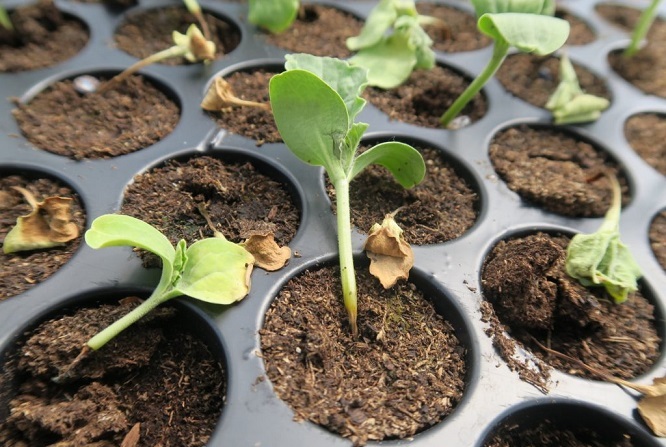
Causes of Damping-Off Disease in Plants
Damping-off disease is primarily caused by harmful fungi and bacteria in the soil. These pathogens thrive in high-moisture, poorly drained conditions, rapidly multiplying to attack plant roots and tissues, ultimately leading to rot and plant death. Unsuitable temperatures and overcrowded planting can also exacerbate the disease.
Primary Fungal Pathogens Responsible for Damping-Off
The most common fungi causing damping-off include:
- Pythium species
- Phytophthora species
- Fusarium species
- Rhizoctonia species
- Acremonium species
- Rhizoctonia solani
These fungi survive easily in soil and on contaminated tools, pots, or farming equipment. Conditions that promote disease spread include:
- Planting old seeds in cold, wet soil.
- Using cold irrigation water.
- Poor soil drainage.
- High humidity.
- Excessive planting depth.
- Inadequate ventilation.
Why Young Plants Are Most Vulnerable
Young seedlings are highly susceptible to damping-off due to their underdeveloped roots and tender stems. Mature plants, with thicker stems and stronger root systems, are far less likely to succumb.
Key Risk Factors for Fungal Growth
Optimal conditions for these fungi include temperatures of 28–32°C (82–90°F) and high relative humidity. Under these conditions, fungal colonies multiply rapidly, overwhelming plants.

Prevention and Management of Damping-Off Disease
To effectively prevent and manage damping-off disease in plants, adhere to the following essential practices:
- Improve Soil Structure
- Incorporate organic compost or well-rotted animal manure to enhance soil quality. Ensure raw manure is fully composted before use to avoid introducing pathogens.
- Ensure Proper Drainage
- Plant in raised beds to improve soil drainage and aeration, reducing excess moisture and waterlogging.
- Sterilize Soil and Seedling Beds
- Treat soil and planting beds with sterilizing agents or steam before sowing to eliminate disease-causing organisms.
- Treat Seeds
- Soak seeds in fungicidal solutions prior to planting to prevent fungal contamination.
- Optimize Planting Depth and Spacing
- Plant seeds at the recommended depth and maintain proper spacing to ensure adequate airflow and prevent overcrowding.
- Control Moisture Levels
- Avoid overwatering. Opt for shorter, more frequent irrigation sessions to keep soil moist but not waterlogged.
- Regulate Greenhouse Conditions
- Maintain moderate temperatures and humidity levels. Ensure proper ventilation to discourage fungal growth.
- Use Resistant Seed Varieties
- Select high-quality seeds certified for resistance to damping-off disease.
- Remove Infected Plants and Apply Fungicides
- Immediately uproot and destroy infected seedlings. Treat affected areas with fungicides like Ridomil, Rovral TS, or mancozeb, strictly following agricultural experts’ guidelines.
- Adopt Smart Irrigation Systems
- Use automated irrigation systems to precisely monitor and adjust soil moisture levels.
- Sanitize Tools
- Sterilize gardening tools and equipment before planting to prevent the spread of fungal spores.
Why These Steps Matter
By implementing these strategies, growers can significantly reduce the risk of damping-off, improve plant health, and boost crop yields. Proactive disease management not only enhances product quality but also lowers costs associated with treatments and crop losses.
Key Takeaway: Prevention is more effective and economical than treating outbreaks. Prioritize soil health, moisture control, and sanitation to protect your crops and ensure sustainable agricultural success.
